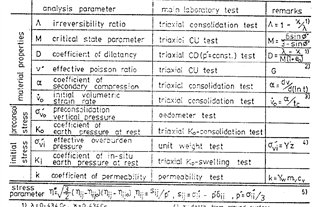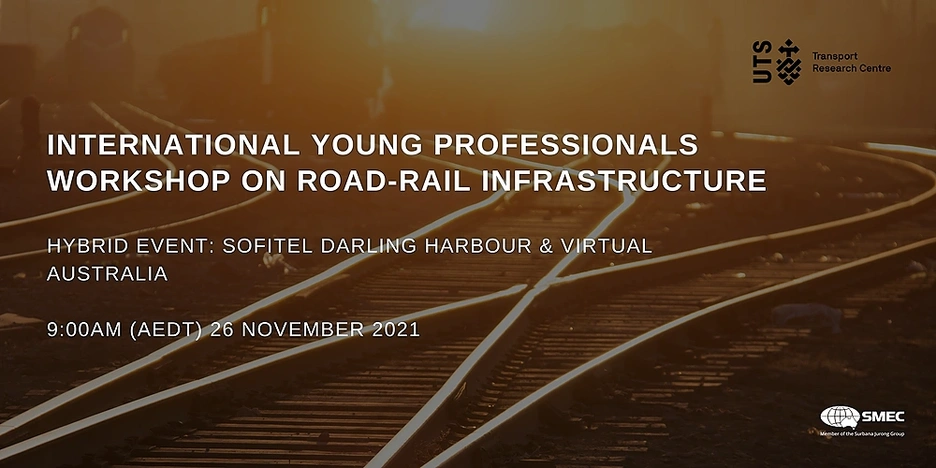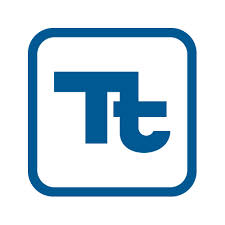Loading Geo-Trends Review...

Adda Athanasopoulos-Zekkos news
05 Sep 2021
I had a great conversation with CNN's John Vause, on his show last week, on the impact of #climatechange and the need for continued investment in #infrastructure.
Read More
Lucy Wu YMPG
24 Oct 2021
For those who couldn't attend all of our Future of Geotechnics sessions live, we have made the recordings available on the YMPG YouTube channel. Really great talks and definitely worth your time....
Read More
ISSMGE ISSMGE TC304
10 Aug 2021
TC304 has contributed the following 15-min short videos to ISSMGE Virtual University (coordinated by TC304 Young Group: Andy Leung, Zijun Cao & Lei Wang) How to characterize...
Read More
Binod Tiwari Geo-Challenge 2022
03 Oct 2021
Dear all, The National Geo-Challenge 2022 Student Competitions will be organized on March 21, 2022, during the Geo-Congress 2022 at Charlotte, North Carolina. Please see below the link to the files...
Read More
Geoengineer.org news
19 Oct 2021

The following obituary was prepared and presented by the International Association for Engineering Geology and the Environment (IAEG): "May the earth be light to you, rest in peace Prof. Paul Marinos [..]"
Read More
Bentley Systems YII2021
27 Sep 2021

The Bentley team is back and ready for another amazing Year in Infrastructure and the 2021 Going Digital Awards virtual event featuring Bentley executives, Siemens, AEC Advisors, and our Going Digital Award winners!Join Bentley virtually on December 1 and December 2 for the latest executive insights and attend the event to learn how the people behind the award-winning projects made amazing impacts in cities, energy, mobility, project delivery, and water.
Read More
Bentley Systems
Digging Deep for Safe Solutions

Connect With An Expert

ISSMGE ISSMGE Virtual University
28 Sep 2021

Read More

Bentley Systems Education
29 Oct 2021

Now, with global expansion, the Bentley Education program is accessible to all students and educators at middle schools, high schools, community colleges, polytechnics, institutes, and universities across the world...
Read More
International Journal of Geoengineering Case Histories news
08 Nov 2021

Read More


Dimitrios Zekkos news
27 Aug 2021

Read More

Lucy Wu YMPG
24 Oct 2021
Here are some information on how to stay up-to-date on ISSMGE activities as well as resources that the Society is providing to its members: https://www.mygeoworld.com/file/139843/information-for-ym...
Read More
Ali Bouafia group
01 Sep 2021
Read More
Plaxis help
Q&A
- 25 Oct 2021
Dear colleagues
I have encountered a problem in modeling a sand bed with a granular cushion on it in Plaxis 2D V20 using the unit cell approach. As the cushion thickness increases, the load capacity decreases. Is it possible to check the file?
Please let me know your Email address to send the file.
Best Regards,
Post Your Answer
Answers
Bay Mud Settlement
Q&A
- 12 Oct 2021
I am not a geotechnical engineer, but I have a question concerning the settlement of bay bud with several feet of fill on top, and a high water table. I understand the logic concerning the long term settlement of the bay mud due to the weight of the fill, but my question is in regards to the effects of lowering of the water table in the fill. It has been described to me that by lowering the water table, the fill is now no longer bouyant and therefore heavier. This heavier weight then results in additional settlement of the fill. This does not make since to me, as the total weight on top of the bay mud is heavier with fill and water than with just fill. Am I missing something?
In addition, what happens when the water table is lowered into the bay mud?
Post Your Answer
Answers

Stephen Buttling
- 04 Jan 2022
Yes Someone, I am afraid that, as you are not a geotechnical engineer, you are indeed missing something. Soil is a three phase system, made up of solid, fluid and gas. The solid is the soil particles, the fluid is normally water, and the gas can be air. Below the water table there is no air, so only solid and water. The water is continuously connected, so is subject to hydrostatic pressure, which we call the pore pressure. While gravity, and the soil above, is trying to push the particles closer together (total stress), the water is trying to push them apart. The difference between these two pressures, being the net pressure pushing the particles together, is what we call effective stress. When you lower the water table in the fill the total stress remains the same but the effective stress increases because there is less water pressure. This leads to consolidation. The same will happen if the water table is lowered into the Bay Mud, but that will be slower because of the lower hydraulic conductivity. Hope that helps.
pressuremeter test
Q&A
- 16 Nov 2021
Post Your Answer
Answers
Sekiguchi-Ohto viscid_Input parameter
Q&A
- 13 Aug 2021
I have a question on how to determine the coefficient of secondary compression and the intital volumetric strain rate as part of the input parameters of the Sekiguchi-Ohta viscid model. The Material Models Manual of Plaxis 2D suggests using a secondary compression index as an alternative to the above mentioned input parameters without any further informations on how to specifiy it. Unfortunately I haven't found a lot in the literature about this subject. The second question is wether it is possible or not to derive the input parameters of the Sekugichi-Ohro viscid model out of the input data set of the soft soil creep model using the soil test tool by excuting back calculations?


Thank you all in advace.
Greetings
Post Your Answer
Answers

Bentley Systems PLAXIS
12 Nov 2021

Do not miss the final session of our "Engineering Rock Mechanics" PLAXIS course on November 24 where we will be dealing with ERM works and mechanisms that happen near surface: excavations and slopes
Register Now
Michael Byle GROUT2022
29 Oct 2021
6TH INTERNATIONAL CONFERENCE ON GROUTING & DEEP MIXING 13 Feb 16 Feb 2022 Location: New Orleans Marriott, 555 Canal St, New Orleans, LA Deep Foundations Institute (DFI) and International Con...
Read More
Ricardo Ortiz Hermosillo SMIG
12 Oct 2021
Read More

Bentley Systems PLAXIS
17 Nov 2021

Do not miss our webinar "An Introduction to Automation in PLAXIS" on November 25 where we will be exploring ways of creating automations to handle repetitive tasks and how Python could help in that direction
Register Now Engineering Intern
Engineering Intern
Fields: Civil - Geotechnical , Civil - Structural, Civil - Environmental, Civil - Hydraulic, Civil - Construction, Civil - Transportation , Civil-other
Location: Oregon, United States
 Geo-Structural Intern (Summer 2026)
Geo-Structural Intern (Summer 2026)
Fields: Civil - Geotechnical , Civil - Structural
Location: Massachusetts, United States
 Site Manager - Landfill, Remedial Action, Earthwork and Utility Construction
Site Manager - Landfill, Remedial Action, Earthwork and Utility Construction
Fields: Civil - Geotechnical , Civil - Environmental, Construction - Project Manager, Environmental - Environmental Science
Location: Tennessee, United States
 Project Civil Engineer - Private & Municipal
Project Civil Engineer - Private & Municipal
Fields: Civil - Geotechnical , Civil - Structural, Civil - Environmental, Civil - Hydraulic, Civil - Construction, Civil - Transportation , Civil-other
Location: Arizona, United States
 Dams Engineer
Dams Engineer
Fields: Civil - Geotechnical , Civil - Structural, Civil - Hydraulic
Location: Connecticut, United States
 Summer 2026 Engineer Intern/Co-op - Underground Construction & Tunneling
Summer 2026 Engineer Intern/Co-op - Underground Construction & Tunneling
Fields: Civil - Geotechnical , Civil - Construction, Civil - Transportation , Construction - Project Manager, Construction - Engineer, Construction - Field Engineer, Construction - Other
Location: Kansas, United States
 Transportation Design Section Manager
Transportation Design Section Manager
Fields: Civil - Geotechnical , Civil - Structural, Civil - Transportation , Civil - Project Management
Location: Utah, United States
 Geotechnical Engineer Team Leader
Geotechnical Engineer Team Leader
Fields: Civil - Geotechnical , Civil - Project Management
Location: California, United States
 Civil Engineer
Civil Engineer
Fields: Civil - Geotechnical , Civil - Structural, Civil - Environmental, Civil - Hydraulic, Civil - Transportation , Civil-other
Location: California, United States















